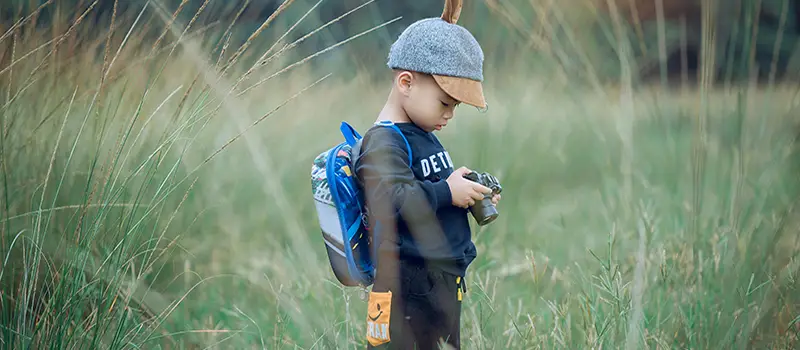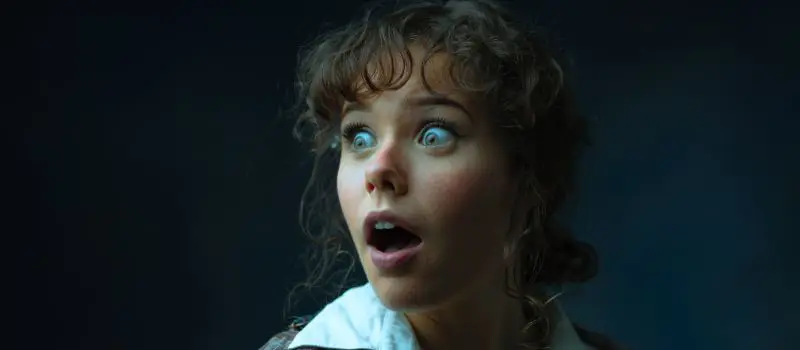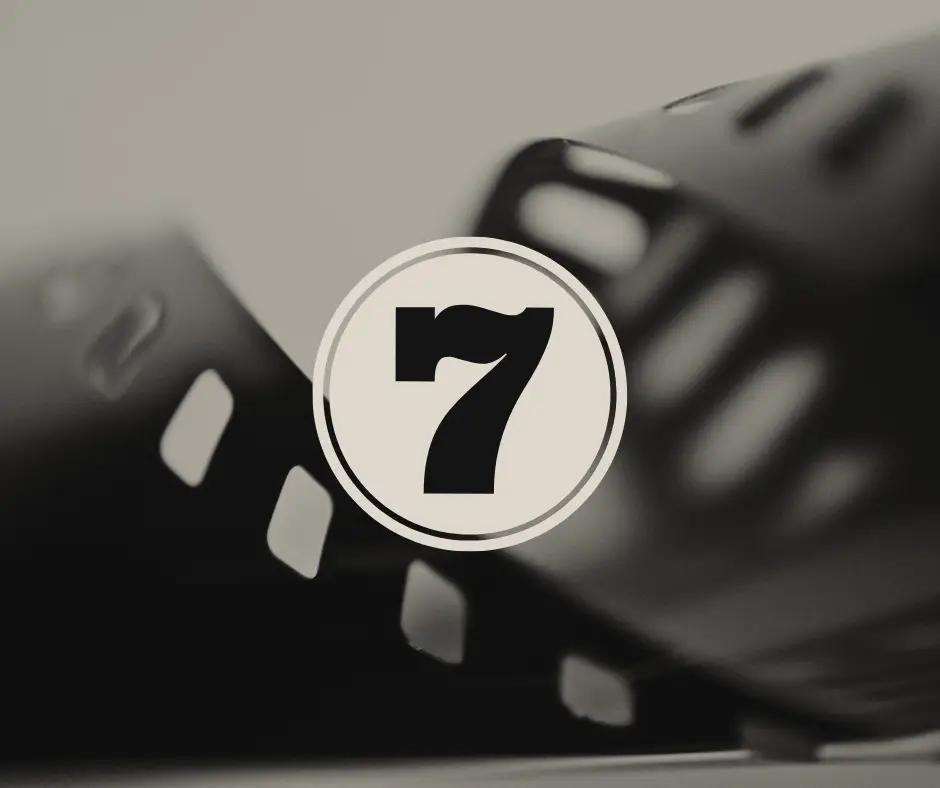
The photographer's eye
Forget the camera, educate your eyes
In a nutshell:
Learn to see what others ignore: reflections, shadows, textures, directional lines. Discover 7 challenges to educate your photographic eye and create images that convey strong emotion.
"Photography is the literature of the eye" (Henri Cartier-Bresson). (Henri Cartier-Bresson). And just as in literature, there's no secret to developing an artistic style - you have to learn.
Are your photos lacking that "je-ne-sais-quoi"? That ability to tell a story, to capture a strong emotion?
It's not your equipment that's lacking, or a "lack of talent". It's your photographic eye that's slumbering, a skill you need to develop through practice.
Practice and your shots will change.

Boost your photographic eye: get 30 exclusive exercises free!
Developing active observation

Who takes the time to observe reflections, shadows, invisible details? Your eye needs to become a mental sketchbook.
Visit art photography, The aim is not to show reality, but to convey an emotion or an idea.
To do this, cultivate these 4 points regularly:
1. Active observation

Learn to see what others don't see. By spotting an overlooked detail, a fleeting play of light or an unexpected texture, you will find the raw material for your art.
Develop the habit of scanning the world around you, because every street corner can hide a unique composition and a scene to be revealed.
For example, notice the shapes drawn by shadows on a wall, the unusual reflections in a shop window, or even the unexpected alignment of everyday objects.
2. Creative intent

Each of your photographs should tell a story, have a purpose.
Ask yourself: what specific message, what strong emotion do I want to convey?
It's this 'why' that transforms a simple snapshot into a compelling work of art.
Example: instead of just photographing an empty bench, decide to tell the story of solitude, waiting or memory. (In the case of solitude, you could frame the picture wide with an empty sky, or place the bench in the middle of a large space).
It's this 'why' that transforms a simple snapshot into a compelling work of art.
3. The art of selection
 The frame is your canvas. It's a question of deliberately choosing every element that goes into it, and above all, what is excluded.
The frame is your canvas. It's a question of deliberately choosing every element that goes into it, and above all, what is excluded.
Every line, every shape, every subject must serve your intention and make it obvious.
For example: look out for distracting elements in the background: a pole that 'pushes' against your subject's head, an unsightly road sign, or a colour that distracts from the essential.
4. Emotional connection
 What moves you personally in a scene is what you should try to convey.
What moves you personally in a scene is what you should try to convey.
By drawing on your own feelings, you'll create photos that resonate with the viewer and send a shiver down their spine.
For example: if you are moved by the solitude of a dark alleyway, try to convey this feeling by playing with deep shadows and subdued light.
Each photo tells your story. A shadow revealed, an unusual object... It's your signature. The camera is just the brush, the eye the real artist. Ready to give your images a purpose?
Quiz: do you have a photographer's eye?
Quiz - Developing your photographic eye

Test your photographic eye with this quiz: receive your results by email and walk away with the "30 exercises to improve your photographic eye" challenge as an exclusive gift!
7 practical challenges to strengthen your photographic eye (even without a camera)

These exercises force your brain to see differently, even without equipment. Creativity takes practice!
1) The single framework

The aim: Learn to explore a subject from every angle.
The exercise: Choose a simple object (a cup of coffee, a piece of fruit on a table). Without moving more than two metres, force yourself to take at least 10 different photos.
Play with angles (top, bottom, side), close-ups and details. Each shot should show the object in a new way. Your brain will be looking for originality where it only saw the ordinary.
The benefit: You develop creativity under pressure.
2) The changing light

The aim: Understand how light transforms a scene.
The exercise: Find a simple spot (your balcony, a window, a tree). Photograph it at three different times of day: morning, midday and late afternoon.
Observe how shadows change, how colours intensify or soften. The same place can change from a happy mood to a more dramatic atmosphere, just by changing the light.
The benefit: You sharpen your sensitivity to light.
3) Directional lines

The aim: Learn how to use lines to direct the eye.
Exercise: on your next walk, make it a rule to photograph only lines.
Look for them everywhere: a row of trees, a staircase banister, the patterns on a pavement, the shadows on a wall.
Ask yourself: how can these lines 'point' to an interesting subject, or create a sense of depth in my image?
The benefits: You'll learn to direct the viewer's gaze into your photo, making your compositions clearer and more striking.
4) Simplification

The objective: Simplify your compositions for a clearer, more direct message.
Exercise: Before taking your photo, look carefully at the scene.
Identify anything that doesn't serve your main subject or the emotion you want to convey: a pole in the background, a person walking by, a brightly coloured object that draws the eye elsewhere.
Your job is to find the right angle, framing or moment so that these disruptive elements disappear or are minimised. Only the essential should remain in your image.
The benefit: You'll learn how to clean up your photos so that your message is clear and powerful.
5) The visual mini-story

The aim: Tell a complete story in a few pictures.
The exercise: Observe an everyday scene (someone drinking a coffee, a child playing, a leaf falling).
Your task is to tell the story in just three photographs. Think of it as a sequence: the first image introduces the subject or location, the second shows the main action, and the third is the conclusion or consequence.
The order and choice of your images must be logical to create a little "silent film".
The benefits: You'll develop your ability to tell stories with your photos, creating series that make sense and captivate the viewer.
6) Square format

Aim: Learn how to compose your images in a balanced and creative way, using a different format.
The exercise: Take your smartphone and set it to square photo mode (1:1). Or, if you have a camera, imagine a perfect square with your hands in front of the scene.
The idea is to force you to see the composition in a way other than the usual rectangle format. Look for balance: your subject can be in the centre, or you can play with shapes that meet in the corners, or perfect symmetry.
This format forces us to think about the harmony and arrangement of the elements in a new way.
The benefit: You'll develop a sharper eye for balance and symmetry, opening the door to original, striking compositions.
7) Unexpected points of view

The aim: Dare to explore original angles to transform the banal into the unique.
The exercise: Set yourself a simple rule: for this exercise, don't photograph at eye level!
Lie down on the ground, climb up a low wall, photograph through a bush, a fence or a puddle of water that acts like a mirror.
Explore every possible perspective. You'll see that a simple pavement can become an abstract line, or a group of people a surprising graphic motif.
The benefit: You'll develop your ability to find originality and surprise in everyday scenes.
What happens next? Keep developing your photographic eye.

These 7 challenges are just the beginning. The photographer's eye is a constant learning curve.
So that you can continue to expand your horizons:
- Get inspired: Observe the composition of a painting, the light of a film, or the shots of great photographers. Each image is a lesson (Cartier-Bresson, JR, Edward Hopper, Roger Deakins...).
- Share and exchange: Show your photos and ask for opinions. Feedback and discussion will enrich your vision enormously.
- Analyse your images: Become your own coach. Ask yourself: "What feeling does this photo evoke? Have I conveyed my intention correctly? This introspection will sharpen your eye.
Whether it's reading photo books, visiting exhibitions or analysing scenes from films, feed your curiosity. But above all, the secret is to keep photographing again and again. Your eye is forged through observation and practice.
It's up to you
FAQ : The photographer's eye
What is the photographer's eye?
The photographer's eye is the ability to observe and spot what others cannot see.
It's the ability to transform an ordinary scene into a captivating image through attention to detail, light, shadow and composition.
This skill is learned through practice and active observation.
Can you develop your photographic eye without expensive equipment?
All you need is a smartphone to develop your photographic eye.
The key is not the equipment, but the ability to observe and regular practice.
The composition and observation exercises can even be done without a camera, using mental observation alone.
How long does it take to develop your photographic eye?
The development of the photographic eye is a constant learning process that evolves with practice.
By practising regularly with targeted exercises such as photographing the same subject from 10 different angles or observing the changing light, progress becomes visible very quickly.
What are the most effective exercises for strengthening your photographic eye?
The most effective exercises include the single frame challenge (10 photos of the same object), observing light at different times of day, looking for directional lines and simplifying compositions.
Practising observation without triggering for 10 minutes before photographing also sharpens the eye.
What is the difference between photographic technique and the photographer's eye?
Photographic technique is all about setting up the camera and mastering the equipment.
The photographer's eye, on the other hand, is the ability to see a scene, to anticipate a composition and to convey an emotion even before the shutter is released.
It's observation and creative intent that make the difference.
How does light help develop your photographic eye?
Observing how light transforms a scene at different times of the day is essential for developing your eye.
Shadows, reflections and light intensity completely change the atmosphere of a place.
Practising photographing the same place in the morning, at midday and at the end of the afternoon sharpens your sensitivity to the lighting atmosphere.
Is the photographer's eye an innate talent or a skill that can be learned?
The photographer's eye is above all a skill that can be learned through practice and regular observation.
Although some people have a natural aptitude, anyone can develop this ability by practising targeted exercises and cultivating their visual curiosity.
